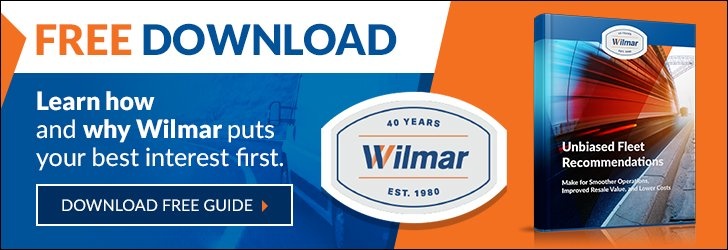
As a fleet manager, your fleet's policy is a vital document that enables you to maintain a safe and successful fleet efficiently. It also helps you ensure drivers are accountable.
That's why creating an effective fleet policy is essential. However, developing such a comprehensive document may be overwhelming. The main challenge is brainstorming and drafting out what should go into a fleet policy and how to ensure the policy is adhered to by everyone in the company.
To make this responsibility less daunting, we have borrowed these tips and ideas from successful fleet managers to help you create one that meets your company's objectives.
Understand And Spell Out The Purpose Of A Fleet Policy
The first step to consider when introducing a new fleet policy for your company is to define its intended purpose and make sure your staff understands it. This helps them know what to expect and what is expected of them. Ideally, a fleet policy's purpose should be to provide drivers with the necessary guidance on using the company vehicles. The document should spell out what's expected of the drivers, the procedures and the consequences of failing to adhere to the set policies.
For instance, the policy should spell out that each driver must operate a company vehicle responsibly, legally, courteously, and safely. Furthermore, their conduct while driving should be as per the policy guidelines and should comply with state, county, and federal traffic laws.
The fleet manager must ensure the employees acknowledge and agree to abide by the terms and conditions of the policy. To avoid confusion, outline the expectations and rules, point out who is allowed to drive which vehicle and who isn't, then carry out the necessary training to give everyone an easy start.
Consult With Other Department Heads
A fleet policy shouldn't be drawn from the ideas of a single person. Since the policy encompasses the entire company, you should consult with other department heads such as the HR manager, Finance manager and Risk manager. These department heads can offer valuable input about proper conduct by employees during working hours, e.g., using a cellphone while driving, violating traffic rules, offensive driving, driving under the influence Wilmar Inc, permissible personal use of a company car, etc.
Allowing everyone to share their input is essential to maintaining consistency and inclusivity. These departments will also have a chance to share insights on sections of the policy document that affect their positions or departments. Fleet management experts affirm that by consulting other departments, you can glean from their knowledge, expertise and experience to develop the best policies that comply with the legal requirements, meet company objectives and employee needs.
Use Multiple Channels To Communicate The Policy
Once you have successfully drafted your company's fleet policy, the next step is to communicate it to your employees. You can do this through multiple channels, including:
- Written policy: Allow each driver to read, acknowledge, and sign the actual policy document.
- Reference guide: Provide your drivers with a reference guide to help them make informed decisions whenever they need to.
- Online training: Although this is optional, having your drivers take up online driving courses will help them gain the required skills for operating a company vehicle.
- Videos and visuals: A practical demo on proper adherence to fleet policy through video clips is recommended. Sending updates and reminders via email, text message, etc., helps keep everyone on their toes.
Use Data To Drive Compliance
Fleet managers can use fleet management software to collect data on driver conduct and use the data to drive compliance. An average fleet policy should require all drivers to submit their monthly B and P mileage. The software will help you note down non-complying drivers and hold them accountable. Additionally, with telematics, you can monitor driver behavior such as idling, speeding, dangerous acceleration, etc. and apply the necessary consequences as per your policy.
Update Your Fleet Policy
The fleet management industry is not left behind in innovation, technology and evolution. New trends, regulations, and technologies are constantly being introduced, which demand that you regularly update your fleet policy to keep up with the recent changes. For example, texting while driving is prohibited in 42 states. Therefore, you should consider this when drafting or updating your fleet policy. Experts also recommend reviewing and updating your policy at least once a year.
A well-defined fleet policy not only brings order and structure to your fleet management operations but also helps guide your drivers and all employees to maintain professionalism and company best practices. These five tips can help you get started when drafting a comprehensive fleet policy. If done right, it can educate your drivers on the best driving conduct. If you need help creating an effective fleet policy or need more information on professional fleet management, contact us today.








